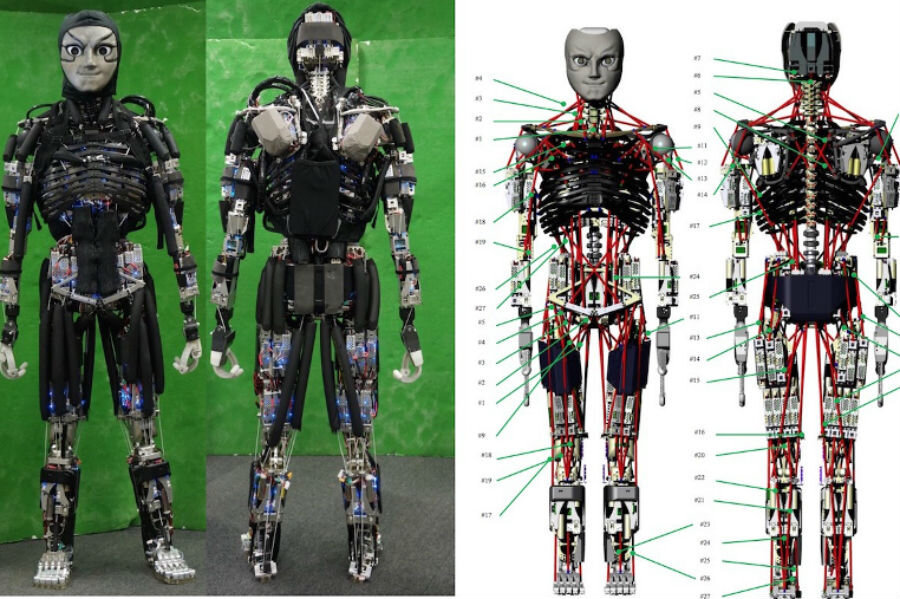Is this the world's sweatiest robot?
Loading...
How many pushups can you do?
As we exercise, our bodies can produce a lot of heat as our muscles convert chemical energy into mechanical energy. To keep moving effectively during such conditions, we produce sweat to cool ourselves down. As the water in our sweat evaporates, it takes excess heat with it, allowing us to keep moving without overheating.
A team from the University of Tokyo has created a robot that can exercise and cool off in a similar way, inspired by human sweat. The new robot is named Kengoro. It has arms, legs, and a head positioned like a human being and is human height: 1.7 meters (about 5.5 feet) tall. So what do you do with such a humanoid robot? You make it do pushups, of course.
The research team was interested in creating a human-like robot, with similar physical capacities. But they soon realized that, for the robot to exercise like a human, it would need a cooling system. For human beings, that cooling system is perspiration. But robots usually require complicated water-cooling systems, which tend to be bulky, and would take up too much valuable space in the structure of the compactly Kengoro robot.
The team came up with a unique solution. Instead of using an active water pump to run liquid throughout the frame, the researchers designed the frame itself to become a passive distributor of deionized water. The researchers designed the porous "skeleton" of the robot to distribute the water throughout the frame in order to keep the heat from Kengoro's 108 motors to reasonable levels.
"Usually the frame of a robot is only used to support forces," lead author Toyotaka Kozuki told IEEE Spectrum. "Our concept was adding more functions to the frame, using it to transfer water, release heat, and at the same time support forces."
The secret is in the construction of the robot's aluminum frame. To create the robotic skeleton, the team used laser sintering, a process through which powdered metal is bonded together by lasers in a highly precise manner, similar to 3D printing. This allowed the researchers to precisely create a porous skeleton through which the deionized water would pass through a process the team calls "artificial perspiration." The water would pass through one layer of the skeleton gathering heat before seeping into an even more porous layer, from which it would evaporate, taking the heat with it.
This robotic sweating enables Kengoro to complete human-like exercises more efficiently. The robot was able to use the passive cooling system to do pushups for 11 minutes straight without overheating.
Kengoro's sweat, like many technological breakthroughs, is inspired by structures and phenomena already present in nature. The Christian Science Monitor recently reported a similarly nature-inspired "furry" wetsuit, which would allow surfers to stay warmer while using less material to do so.
Artificial perspiration has some drawbacks. While Kengoro can run for about half a day on a cup of deionized water, it needs to rehydrate in order to function for longer periods of time, much like humans have to do. The new method is also not as effective as a traditional radiator for robotic cooling, though it is considerably less bulky.
The Tokyo University team presented their paper, "Skeletal Structure with Artificial Perspiration for Cooling by Latent Heat for Musculoskeletal Humanoid Kengoro" at a robotics conference in Daejeon, South Korea.








